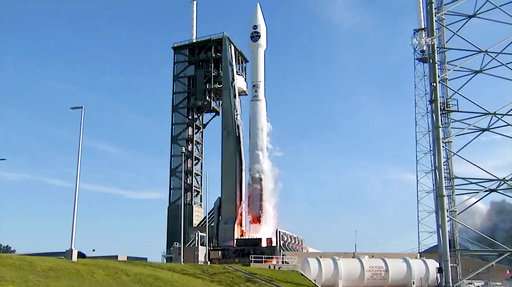NASA launches last of its longtime tracking satellites

NASA launched the last of its longtime tracking and communication satellites on Friday, a vital link to astronauts in orbit as well as the Hubble Space Telescope.
The end of the era came with a morning liftoff of TDRS-M, the 13th satellite in the Tracking and Data Relay Satellite network . It rode to orbit aboard an unmanned Atlas V rocket. There were handshakes all around two hours later, when the satellite successfully separated from the rocket's upper stage.
"''We're going to really celebrate this one," said launch director Tim Dunn.
NASA has been launching TDRS satellites since 1983. The 22,300-mile-high constellation links ground controllers with the International Space Station and other low-orbiting craft including Hubble.
"It's like our baby," said NASA's Badri Younes, deputy associate administrator for space communications and navigation.
"People have invested their soul and their sweat into making it happen" over the decades, Younes said on the eve of launch. "This spacecraft has served us so well."
This latest flight from Cape Canaveral was delayed two weeks after a crane hit one of the satellite's antennas last month. Satellite maker Boeing replaced the damaged antenna and took corrective action to prevent future accidents. Worker error was blamed.
The rocket and satellite cost $540 million.
Space shuttles hoisted the first-generation TDRS satellites. The second in the series was aboard Challenger's doomed flight in 1986. It was the only loss in the entire TDRS series.
TDRS-M is third generation. NASA's next-generation tracking network will rely on lasers. This more advanced and robust method of relaying data was demonstrated a few years ago during the moon-orbiting mission LADEE. NASA hopes to start launching these high-tech satellites by 2024. Until then, the space agency will rely on the current network.
NASA needs seven active TDRS satellites at any given time, six for real-time support and one as a spare. The newest one will remain in reserve, until needed to replace aging craft.
Besides serving other spacecraft, the satellites help provide communication to outposts at the South Pole. In 1998, the network provided critical medical help to a doctor diagnosed with breast cancer.
© 2017 The Associated Press. All rights reserved.


















